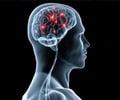An accurate test developed by researchers helps detect schizophrenics by checking their gaze.

Using "simple viewing tests", researchers at Aberdeen University explored the ability of eye movement tests to sort schizophrenics from healthy people.
People with schizophrenia showed well-documented deficits in the ability to track slow moving objects smoothly with their eyes.
Their eye movements tended to fall behind the moving object and then catch up again using rapid eye movements called "saccades".
Schizophrenics also found it more difficult to maintain a steady gaze.
The study, led by Dr Philip Benson and Professor David St Clair, involved a range of eye tests where volunteers were asked to track slow moving objects slowly with their eyes, inspect a variety of everyday scenes and given instructions to keep a steady gaze on a single unmoving target.
Advertisement
"It has been known for over a hundred years that individuals with psychotic illnesses have a variety of eye movement abnormalities, but until our study, using a novel battery of tests, no one thought the abnormalities were sensitive enough to be used as potential clinical diagnostic biomarkers," the Daily Mail quoted Dr Benson as saying.
Advertisement
"In the free-viewing test, whereas most individuals follow a typical pattern with their gaze as they scan the picture, those with schizophrenia follow an abnormal pattern and in the fixation task individuals with schizophrenia found it more difficult to maintain a steady gaze," Benson said.
Several methods were then used to model the data and the accuracy of each of the created algorithms was tested by using eye test data from another group of cases and controls. Combining all the data, one of the models achieved 98 per cent accuracy.
"We are keen to explore how best our findings can be developed for use in routine clinical practice," Professor St Clair said.
"Typical neuropsychological assessments are time-consuming, expensive, and require highly trained individuals to administer. In comparison, these eye tests are simple, cheap, and take only minutes to conduct.
"This means that a predictive model with such precision could potentially be incorporated in clinics and hospitals to aid physicians by augmenting traditional symptom-based diagnostic criteria.
"The next thing we want to know is when the abnormalities are first detectable and can they be used as disease markers for early intervention studies in major mental illness?" St Clair added.
The study has been published in the journal Biological Psychiatry.
Source-ANI









